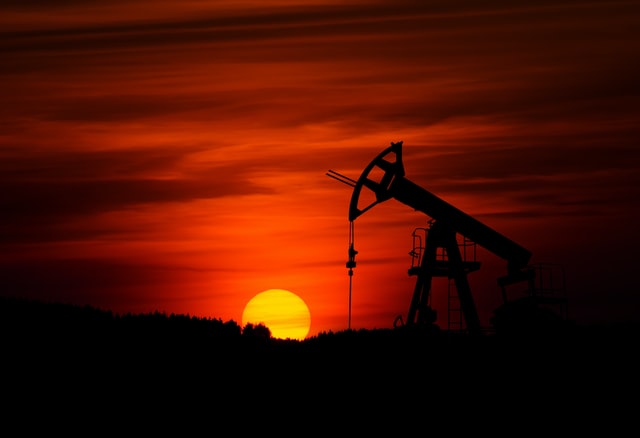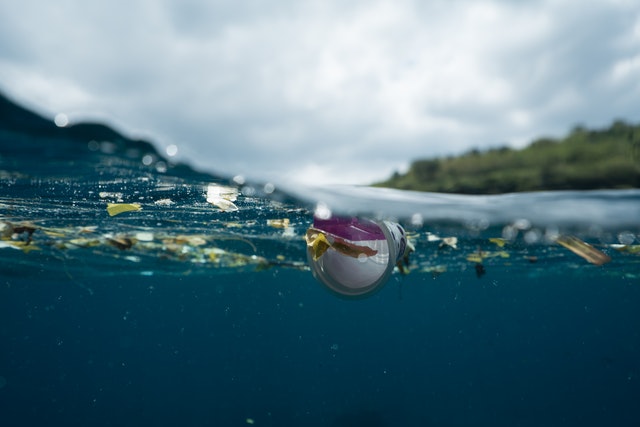Plastic Pollution & Climate Change
There is a lot of talk surrounding the topic of climate change and everyone has an opinion. But something that isn’t really up for debate, and is largely overlooked, is plastic pollution. It’s important that each of us learn what impact plastic pollution has on our environment and how we can reduce plastic waste and […]
There is a lot of talk surrounding the topic of climate change and everyone has an opinion. But something that isn’t really up for debate, and is largely overlooked, is plastic pollution. It’s important that each of us learn what impact plastic pollution has on our environment and how we can reduce plastic waste and consumption.
When discussing plastic, we normally think in terms of the plastic that we are throwing away and how that affects the environment. But one other thing to take into account is what impact producing the plastic in the first place,has on the environment and on climate change.
Every piece of plastic begins life as a fossil fuel. At each stage of the plastic lifecycle, greenhouse gases are emitted. Those stages are:
- Fossil fuel extraction and transport
- Refining and manufacturing of the plastic
- Plastic waste management
- The ongoing impact of plastic after it’s reached our oceans, waterways and landscapes.
According to a report done by the Centre of Environmental Law:
“Greenhouse gas emissions from the plastic lifecycle threaten the ability of the global community to keep global temperature rise below 1.5°C. By 2050, the greenhouse gas emissions from plastic could reach over 56 gigatons—10-13 percent of the entire remaining carbon budget.”
According to this same report, if the production of plastic continues at it’s projected course, the numbers of Co2 will look something like this:
(Gt CO2e means: gigatonnes of equivalent carbon dioxide)
2019: 0.89 Gt CO2e this is equivalent to 189 coal plants
2030: 1.34 Gt CO2e this is equivalent to 295 coal plants
2050: 2.80 Gt CO2e this is equivalent to 615 coal plants
Lets now explore how the different stages of the plastic life cycle affect our climate.
Fossil Fuel Extraction and Transport

The creation of plastic requires fossil fuels, these need to be extracted and transported which produce emissions of greenhouse gases. The emissions come directly from methane leakage, flaring, fuel combustion and energy consumption while the fossil fuels are being drilled. As well as emissions caused by land disturbance when forests and fields are cleared for well pads and pipelines. It’s estimated that in the USA alone in 2015, emissions were in the range of 9.5-10.5 million metric tons of CO2 equivalents (CO2e) per year, this was caused mainly by fracked gas while the fossil fuels were being extracted and transported for plastic production.
Refining and Manufacturing of the Plastic
Plastic production is one of the fastest growing manufacturing sectors thus making it the most greenhouse gas-intensive industry. Plastic manufacturing is energy intense and emissions intensive, producing significant emissions in it’s refining and manufacturing stages.
Waste Management
Plastic waste is separated into 3 areas. Landfill, recycled and incinerated. Each of these areas produces greenhouse gas emissions. Though plastic waste going to landfill produces less greenhouse gases than the other 2, it poses different problems for the climate and environment. Recycling produces a moderate amount of emissions and incineration of plastic produces high amounts of emissions. The use of incineration for plastic waste is set to dramatically grow globally in the next few decades.
Plastic in the Environment

A first-of-its-kind study was done to find out the impact unmanaged plastic has on the environment. It found that plastic on the ocean’s surface continually releases methane and other greenhouse gases, these emissions increase as plastic is broken down further. The research also showed the plastic on the coastlines, riverbanks and landscapes release greenhouse gases at an even higher rate. Another important problem is with microplastics and how they interfere with the ocean’s capacity to absorb and sequester carbon dioxide. Much of the sea life such as microscopic plants (phytoplankton) and animals (zooplankton) are being contaminated from microplastic. Interfering with the sea life’s ability to absorb anthropogenic carbon (various forms of carbon including carbon dioxide). This is due to the microplastic reducing the metabolic rates, reproductive success and survival of the zooplankton as well as the ability of the phytoplankton to fix carbon through photosynthesis.
How Do We Combat Plastic Pollution & Climate Change
There are many things individuals can do to reduce their plastic waste in the environment but ultimately it starts at the top. There are important actions which will meaningfully reduce greenhouse gas emissions from the plastic lifecycle. These actions include:
- Eliminating the production and use of single-use, disposable plastic.
- Coming up with new and sustainable solutions for our energy consumption needs.
- Encouraging the development of zero-waste communities.
- Add greater responsibility to the producers of plastic to create a more circular economy.
- Implementing and enforcing ambitious targets to reduce valid greenhouse gas emissions from all sectors, not just plastic production.
Though the list above should be at the top in terms of priority, there are still many things we can do individually that can help create a circular economy as well as influence the manufacturers to stop producing single-use plastic. Such as:
- Buy second hand
- Always take your own bags when out shopping
- Buy products at the supermarket that aren’t wrapped in plastic when there is a choice
- Cook more and eat out less
- Avoid microbeads in beauty products, shower gel and toothpaste
- Stop buying bottled water
- Avoid synthetic clothing
- Put pressure on the manufacturers by writing letters, voting on important environmental issues and sharing your message of reducing plastic on social media
